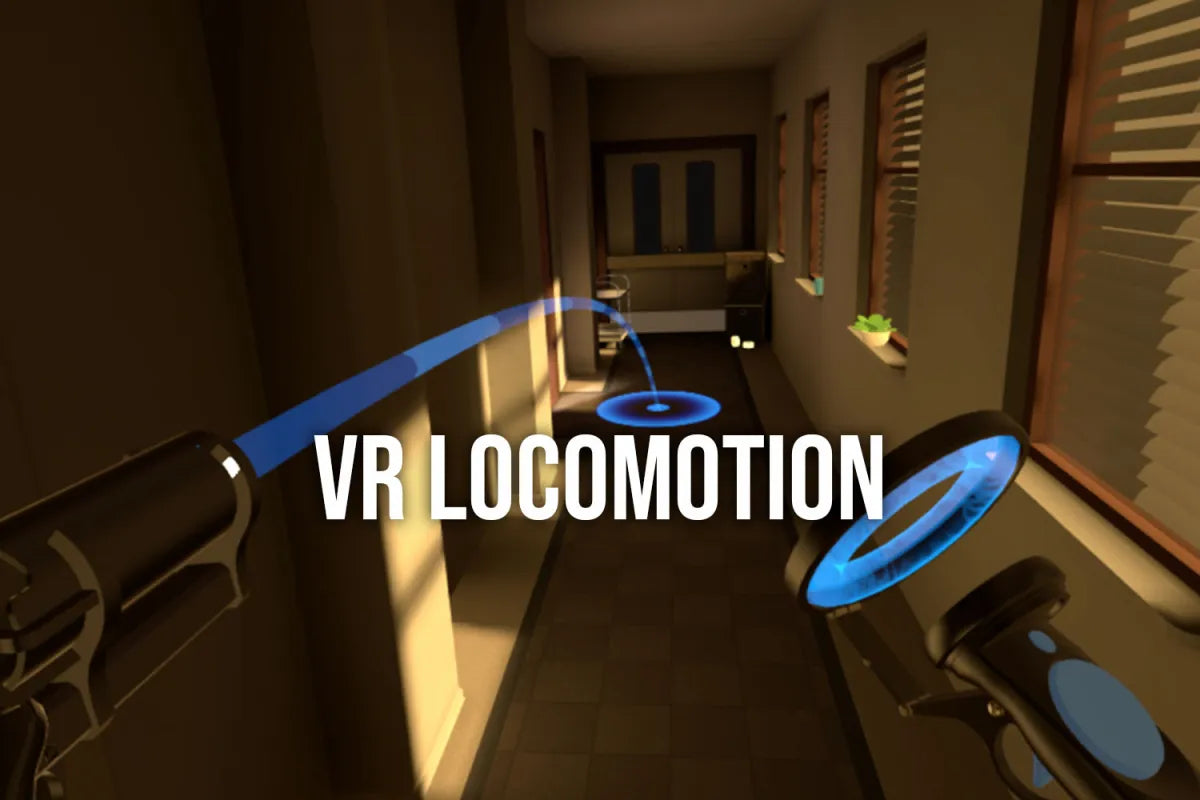What is VR Locomotion?
Locomotion in virtual reality (VR) is all about how people move around in the virtual worlds they experience through VR technology. Just like in the real world, we walk, run, or use various methods to get from one place to another. In VR, locomotion is about replicating or simulating these movements within the virtual environment.
Why is VR Locomotion Important?
Locomotion is indeed a crucial aspect of VR application design, as it directly affects the user’s comfort, immersion, and overall experience within the virtual world. Providing a smooth and natural locomotion experience is essential to ensure that users can navigate and explore virtual environments effectively.
A well-designed locomotion system in VR aims to strike a balance between providing freedom of movement and minimizing motion sickness or discomfort. Developers employ various techniques to achieve this balance, taking into consideration factors such as user comfort, hardware limitations, and the specific requirements of the VR experience. Some key considerations in VR locomotion design include
Motion Sickness Mitigation
Motion sickness can occur when there is a disconnect between the user’s visual perception and their physical movement. Developers employ techniques such as reducing acceleration, providing visual reference points, or using teleportation to minimize the potential for motion sickness.
User Control
Allowing users to have control over their movement is essential for a satisfying VR experience. Providing options for different locomotion methods and movement speeds can accommodate individual preferences and physical capabilities.
Most VR games simply use controllers, but recently also omnidirectional treadmills such as from Kat VR are more popular, as technology advances.
Realism vs. Abstraction
VR locomotion can be designed to replicate real-world movement or embrace more abstract or game-like mechanics. The choice depends on the desired level of immersion, the nature of the VR experience, and the target audience.
Accessibility
Locomotion design should consider users with varying abilities and physical limitations. Offering alternative locomotion methods or customizable settings can make VR experiences more accessible to a wider range of users.
Environment Constraints
The virtual environment itself may impose limitations or affordances for locomotion. For example, if the virtual world contains obstacles or restricted areas, the locomotion system should account for these factors to ensure smooth navigation.
VR Locomotion Types
The locomotion types can be categorized into two broad categories: Physical Locomotion and Artificial Locomotion. Here’s a chart including the locomotion types under each category, along with their definitions, pros, and cons:
Artificial Locomotion
| LOCOMOTION TYPE | DEFINITION | PROS | CONS |
|---|---|---|---|
| Teleportation | Instantly moving to a selected location in the virtual world | – Reduces motion sickness – Provides quick navigation |
– Can break immersion – Limited natural movement experience |
| Smooth Locomotion | Continuous movement controlled by input devices | – Allows fluid and natural movement – Familiar to gamers |
– May induce motion sickness in some users – Requires space to move |
| Vehicle Simulation | Controlling virtual vehicles for navigation | – Allows for unique and dynamic experiences | – Less immersive compared to physically moving on foot |
Physical Locomotion
| LOCOMOTION TYPE | DEFINITION | PROS | CONS |
|---|---|---|---|
| Room-Scale VR | Physical movement within a designated area | – Immersive and natural movement – Realistic experience |
– Requires dedicated physical space – Limited by tracking area |
| Physical Walking | Simulating movement by physically walking in place | – Provides a sense of immersion and presence | – Limited by physical space – Can be tiring for longer sessions |
| Arm Swinging | Swinging arms to simulate walking or running | – Engaging and interactive locomotion method | – May not feel as natural as actual walking or running |
Pimax Crystal with VR Locomotion
Pimax headsets support a wide range of locomotion methods depending on the software or game being used. This typically includes common locomotion methods such as teleportation, smooth locomotion with controller input, room-scale VR, and any other locomotion techniques implemented by the software developers. Pimax headsets are also easily used with omnidirectional threadmills such as from Kat VR.
Summary
As VR technology continues to improve, it is likely that new locomotion methods will emerge, providing even more intuitive and natural ways for users to move through virtual worlds. The future of VR locomotion holds exciting possibilities as developers and researchers push the boundaries of what is possible in terms of user experience and immersion.
The above is all we want to share with you. Thanks for reading. And we appreciate your continued interest in our products. Stay tuned for our next blog post!
And if you have more questions, feel free to join us on our Discord channel.








